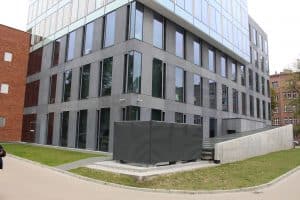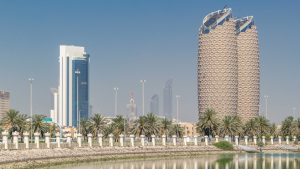Glass-reinforced concrete (GRC) cladding panels have been gaining popularity in recent years as an effective and versatile building material for architectural design. These panels are made by combining glass fibres with concrete to create a lightweight and durable material that can be molded into various shapes and sizes, making it suitable for a wide range of design requirements. In this article, we will explore the benefits of using GRC cladding panels for architectural design, including its versatility, durability, energy efficiency, and cost-effectiveness.
Versatility in Design
One of the key benefits of using GRC cladding panels is the versatility they offer in terms of design. These panels can be molded into a variety of shapes and sizes to meet specific design requirements, and they can also be finished with a wide range of textures and colors to create a unique and attractive aesthetic. This versatility allows architects and designers to create custom designs that not only meet their functional requirements but also complement the overall aesthetic of the building.
For example, GRC cladding panels can be used to create intricate patterns and shapes, making them ideal for creating striking and eye-catching facades. They can also be used to create textured surfaces that mimic the appearance of natural materials, such as stone or wood, without the associated weight and maintenance requirements.
Durability and Longevity
GRC cladding panels are known for their durability and longevity, making them an ideal choice for both commercial and residential buildings. Unlike traditional building materials, such as wood or stucco, GRC cladding panels are not susceptible to rot, decay, or insect damage, and they can withstand extreme weather conditions and UV exposure without fading or deteriorating.
This durability and longevity make GRC cladding panels a cost-effective option over the long term, as they require minimal maintenance and repair, and they can last for many years without needing to be replaced.
Energy Efficiency
GRC cladding panels can also contribute to the energy efficiency of a building. By incorporating several airtight layers within an insulated GRC panel, the ventilation and energy efficiency of the building can be improved. The internal skin of the panels provides good insulation, helping to maintain stable temperatures within the structure and reducing the need for heating and cooling systems.
In addition, GRC cladding panels can also reduce the amount of heat transmitted through the building envelope, helping to keep the interior cool in hot climates and warm in cold climates. This can result in significant energy savings over the life of the building, making GRC cladding panels an environmentally responsible choice for architectural design.
Cost-Effectiveness
Another benefit of using GRC cladding panels is their cost-effectiveness. While the initial cost of these panels may be higher than traditional building materials, such as wood or stucco, the long-term cost savings from reduced maintenance and repair costs, as well as energy savings, make GRC cladding panels a smart investment.
In addition, the lightweight nature of GRC cladding panels means that they can be easily and efficiently installed, reducing the need for heavy equipment and labor costs. This makes GRC cladding panels an attractive option for both large-scale commercial projects and smaller residential projects.
Fire Resistance
GRC cladding panels also offer excellent fire resistance, making them an ideal choice for buildings in areas where fire safety is a concern. These panels are non-combustible and can prevent the spread of fire, providing added protection for occupants and reducing the risk of fire damage.
This fire resistance, combined with the durability and longevity of GRC cladding panels, make them a smart
choice for building projects in areas with strict fire safety codes, such as high-rise buildings or commercial structures.
Ease of Installation
GRC cladding panels are also relatively easy to install, which can help to reduce project timelines and costs. Unlike traditional building materials, such as brick or stone, GRC cladding panels are lightweight and can be easily transported and handled on site. This makes them a good choice for projects with limited access or space constraints, as well as for projects that require a fast and efficient installation process.
In addition, the versatility of GRC cladding panels means that they can be installed in a variety of ways, such as being attached directly to the building structure or being used as standalone panels. This versatility makes GRC cladding panels a flexible option for a wide range of design requirements, and it also allows for easy replacement or repair if necessary.
Conclusion
Glass-reinforced concrete cladding panels are a versatile, durable, and cost-effective building material that offer numerous benefits for architectural design. From their versatility in design, to their energy efficiency and fire resistance, GRC cladding panels are an attractive option for both commercial and residential projects.
In addition, the ease of installation and long-term cost savings of these panels make them an attractive choice for building projects of all sizes. If you are looking for a building material that offers both aesthetic and functional benefits, GRC cladding panels are definitely worth considering.





